Pooja Gamcha, Pooja Cotton Towel, Cotton Gamcha, Pooja Towel, Puja Towels, Red Cotton Towel
$37.99 Original price was: $37.99.$25.49Current price is: $25.49.
Pooja Gamcha, Pooja Cotton Towel, Cotton Gamcha, Pooja Towel, Puja Towels, Red Cotton Towel:
Details:
Item: Cotton Towel/Gamcha
Quantity: Pack of 2
Color: Red
Pattern: Checkered
Length: 2 Meters
Fabric: Cotton
Feature: Handmade
Usage: Pooja & Shower Both
Cotton Pooja Gamcha: A Sacred Essential
Pooja, an integral part of Hindu culture, encompasses various rituals and ceremonies. Among the essentials for performing these rituals is the cotton pooja gamcha, also known as a towel, adorned with red check patterns. This article delves into the significance of this sacred accessory and its traditional usage in pooja ceremonies.
Understanding the Significance of Cotton Pooja Gamcha
In Hinduism, rituals hold profound importance, serving as a medium to connect with the divine. The cotton pooja gamcha plays a pivotal role in these ceremonies. It symbolizes purity and devotion, essential elements in the worshipper’s connection with the divine.
Ritual Importance
The act of performing pooja involves intricate rituals aimed at invoking blessings and expressing reverence towards deities. The presence of a cotton pooja gamcha signifies the devotee’s readiness to engage in these rituals with utmost purity and dedication.
Symbolism in Pooja
The red check pattern on the gamcha carries symbolic significance. Red symbolizes auspiciousness and prosperity in Hindu culture. Additionally, the check pattern represents order and harmony, aligning with the serene ambiance desired during pooja ceremonies.
Red Check Pattern: A Traditional Choice
The choice of red check pattern for cotton pooja gamcha is deeply rooted in tradition and cultural practices.
Cultural Relevance
In Hindu traditions, red holds immense significance and is often associated with festivals, weddings, and religious ceremonies. The vibrant hue is believed to ward off evil and attract positive energy, making it a preferred choice for sacred rituals.
Aesthetic Appeal
Beyond its cultural significance, the red check pattern adds aesthetic appeal to the gamcha, enhancing the ambiance of the pooja space. Its traditional charm evokes a sense of nostalgia and reverence, creating a spiritually uplifting atmosphere.
How to Use Cotton Pooja Gamcha in Pooja Ceremonies
Using a cotton pooja gamcha requires adherence to certain rituals and practices to maintain sanctity and reverence.
Preparation Steps
Before commencing the pooja, the gamcha should be washed and dried to ensure cleanliness and purity. It’s essential to handle the gamcha with reverence, treating it as a sacred offering to the deities.
Placement and Usage
During the pooja, the gamcha is placed beneath the idols or sacred objects as a sign of respect and devotion. It serves as a cushion for offerings and a symbol of purity, absorbing any excess water or substances used during the rituals.
Benefits of Using Cotton Pooja Gamcha
Apart from its ritual significance, cotton pooja gamcha offers practical benefits that enhance the pooja experience.
Absorbency and Comfort
The soft cotton fabric of the gamcha provides absorbency, ensuring that the pooja space remains clean and dry throughout the ceremony. Additionally, its gentle texture offers comfort to the worshippers during rituals.
Sustainability and Eco-Friendliness
Unlike synthetic materials, cotton is biodegradable and environmentally friendly. Choosing a cotton pooja gamcha aligns with eco-conscious practices, reflecting a reverence for nature and sustainability in worship.
The Ritual of Offering Gamcha to Deities
In Hindu traditions, offering a gamcha to deities is a sacred custom with profound spiritual significance.
Religious Customs
Devotees present the gamcha to the deity as a gesture of humility and devotion, seeking blessings and divine grace. It symbolizes the worshippers’ surrender to the divine will and their commitment to righteous living.
Spiritual Significance
The act of offering a gamcha signifies the devotee’s willingness to serve and honor the deity with utmost reverence. It fosters a sense of closeness and intimacy with the divine, deepening the spiritual connection between the worshipper and the deity.
Maintaining the Sanctity of Cotton Pooja Gamcha
To preserve the sanctity of the cotton pooja gamcha, certain guidelines should be followed regarding its care and handling.
Cleaning and Preservation Tips
After each use, the gamcha should be washed with mild detergent and dried in the sun to maintain its purity and freshness. Avoiding contact with impurities and handling it with clean hands is essential to uphold its sanctity.
Handling with Reverence
While using the gamcha in pooja ceremonies, it’s imperative to handle it with utmost reverence and respect. Avoid placing it on the ground or using it for mundane purposes, as it symbolizes purity and sacredness.
Conclusion
The cotton pooja gamcha holds deep spiritual significance in Hindu rituals, symbolizing purity, devotion, and reverence. Its traditional usage and aesthetic charm enhance the ambiance of pooja ceremonies, fostering a sense of connection with the divine. By understanding its significance and adhering to ritual practices, devotees can enrich their spiritual experiences and deepen their devotion.
Unique FAQs
- Can I use any color of gamcha for pooja ceremonies?
- While white is traditionally preferred for its association with purity, red is also considered auspicious and widely used in pooja rituals.
- Is it necessary to wash the gamcha before every pooja?
- Yes, washing the gamcha before each pooja ensures cleanliness and purity, maintaining the sanctity of the ritual.
- Can synthetic materials be used instead of cotton for pooja gamchas?
- While synthetic materials are not prohibited, cotton is preferred for its natural properties and eco-friendliness.
- How should I dispose of a worn-out cotton pooja gamcha?
- It is recommended to dispose of worn-out gamchas in a respectful manner, such as burying them or burning them ceremonially.
- Can the gamcha be used for other purposes besides pooja?
- While it is primarily used for pooja ceremonies, the gamcha can also be utilized as a towel or cloth for other sacred rituals or personal use.

| Choose Design | Design 1, Design 2, Design 3 |
|---|
Only logged in customers who have purchased this product may leave a review.



















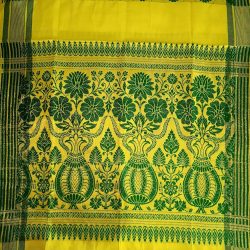
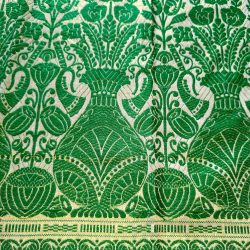
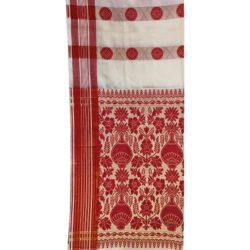
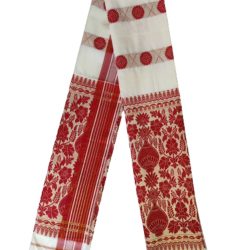
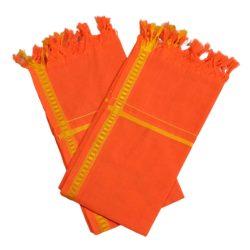
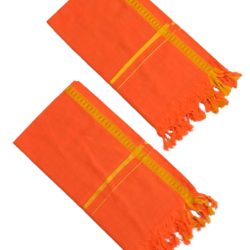
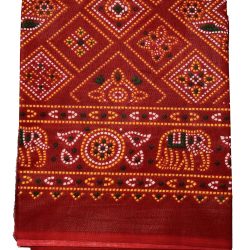
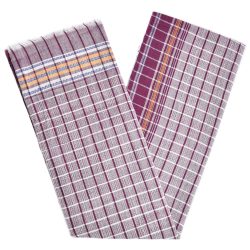
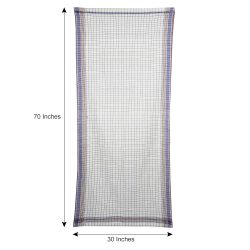
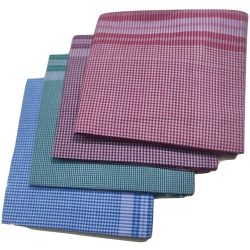
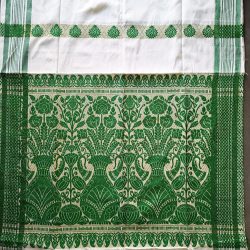
Reviews
There are no reviews yet.